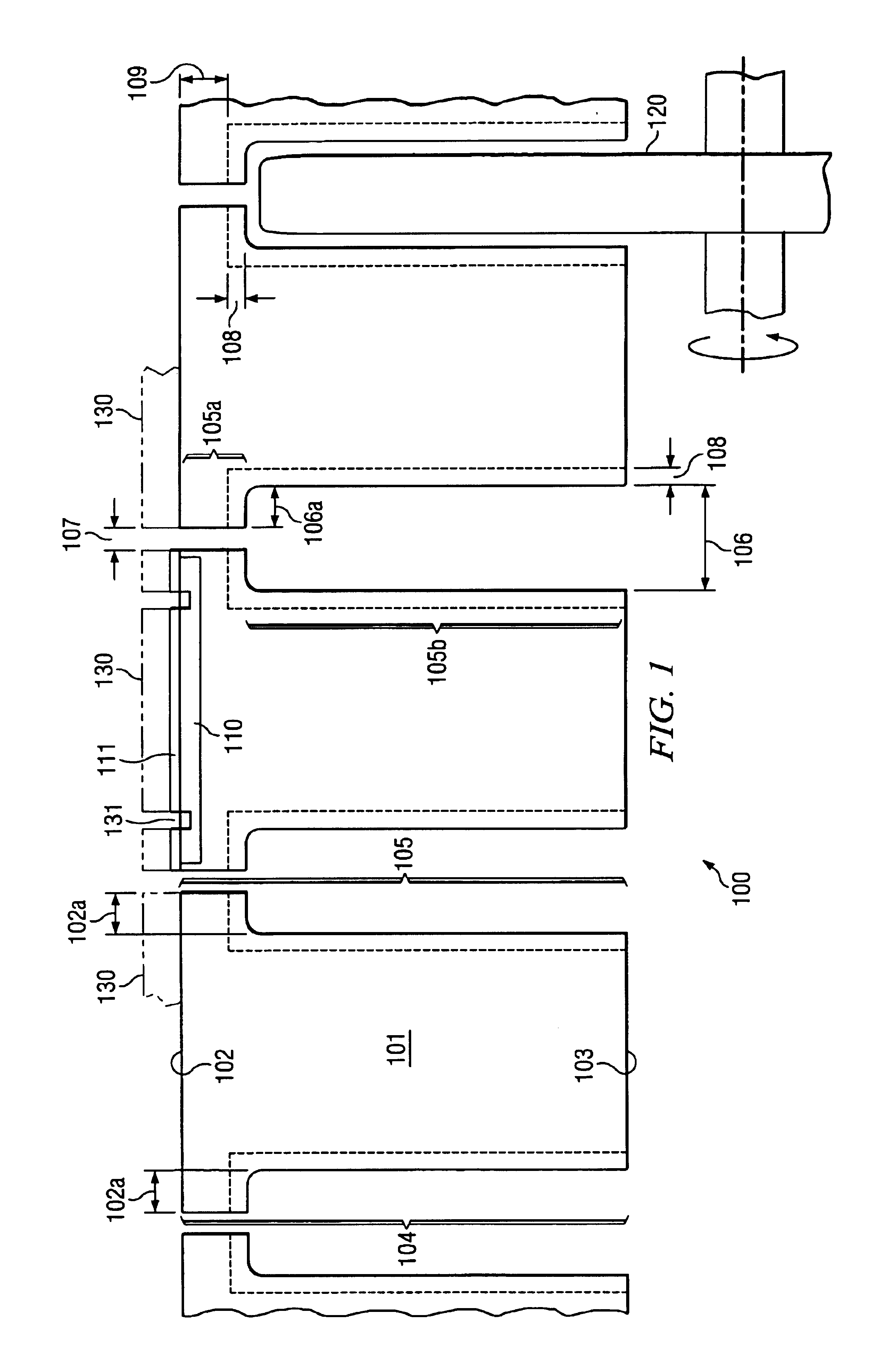Scribe street width reduction by deep trench and shallow saw cut
a trench and trench cutting technology, applied in the field of semiconductor wafer dicing, can solve the problems of significant reliability risks, inability to safely reduce, and most significant limitation in reducing the distance between adjacent circuit chips, and achieve the effect of implementing
- Summary
- Abstract
- Description
- Claims
- Application Information
AI Technical Summary
Benefits of technology
Problems solved by technology
Method used
Image
Examples
Embodiment Construction
[0015]FIG. 1 illustrates schematically the cross section of a portion of a semiconductor wafer, generally designated 100, which has been singulated into a plurality of semiconductor chips 101. The vertical dimension of the wafer has been expanded in FIG. 1 for clarity. The semiconductor material of the wafer may be silicon, silicon germanium, germanium, gallium arsenide, aluminum gallium phosphide, indium phosphide, gallium phosphide, or any other semiconductor material used for fabricating semiconductor devices. Each chip 101 is in principle a cuboid, which has a top surface 102, a bottom surface 103, and four vertical side surfaces, of which only two surfaces 104 and 105 are indicated in FIG. 1. The top surface 102 includes the active electronic device 110, which may for some wafers include an integrated circuit, for other wafers a discreet device such as a diode, especially a light-emitting diode, or a controlled rectifier, or a power transistor. The bottom surface 103 is the pas...
PUM
 Login to View More
Login to View More Abstract
Description
Claims
Application Information
 Login to View More
Login to View More - R&D
- Intellectual Property
- Life Sciences
- Materials
- Tech Scout
- Unparalleled Data Quality
- Higher Quality Content
- 60% Fewer Hallucinations
Browse by: Latest US Patents, China's latest patents, Technical Efficacy Thesaurus, Application Domain, Technology Topic, Popular Technical Reports.
© 2025 PatSnap. All rights reserved.Legal|Privacy policy|Modern Slavery Act Transparency Statement|Sitemap|About US| Contact US: help@patsnap.com



